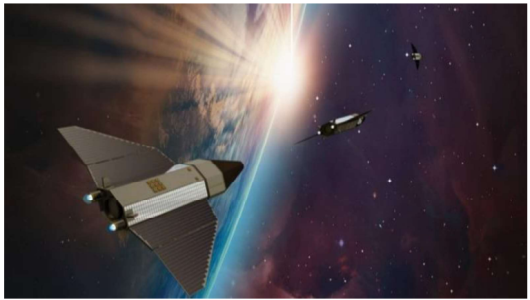AEROVEL: Aerodrag Estimation for Very Low Earth Orbits

Aerodrag is a dominant force acting on spacecraft operating in Very Low Earth orbit (VLEO). Accurately measuring aerodrag is essential for precise orbit determination and orbit control, consequently, precise attitude determination, better collision avoidance, and longer life missions. Conventional methods for aerodrag estimation rely on GPS measurements or onboard models, which can be unreliable or inaccurate due to environmental factors, such as atmospheric disturbances or ionospheric scintillation. This activity suggested the adoption of density sensors to directly measure atmospheric density or very closely related parameters, enabling a more robust approach for aerodrag estimation and control. Pressure / Force sensors (such as Piezoelectric sensors), Temperature Sensors (Pirani gauges , thermocouple), and mass spectrometers analyze the mass and abundance of gas atoms and molecules. Each technique offers unique advantages and disadvantages, making the selection of the most appropriate sensor dependent on specific mission requirements. The suitability of these sensors for VLEO applications have been assessed further and a trade-off has been made between individual and combination of these sensors to support improved drag estimation for VLEO missions. The activity performed simulation of the suitability of these sensors and made a proposal for future work.
The study provided a comprehensive assessment of sensor technologies for aerodynamic drag estimation in Very Low Earth Orbit (VLEO), addressing a critical need for more accurate and robust orbit control in this challenging environment.
The main outcomes and key takeaways were as follows:
Direct Measurement Sensors Are Superior: The evaluation clearly demonstrated that direct measurement sensor, specifically piezoelectric pressure sensors and mass spectrometers, consistently outperform indirect methods such as GNSS-based model approaches and temperature sensors for both atmospheric density and drag force estimation. These sensors offer high accuracy and are minimally affected by environmental variability, making them highly reliable for VLEO missions.
Pressure Sensors Are Practically Feasible: Piezoelectric pressure sensors stand out as the most practical solution for many VLEO missions, balancing accuracy, resource efficiency, and ease of integration. Their compact size and low power requirements make them especially suitable for small satellites, while their direct measurement capability ensures robust performance across varying solar and geomagnetic conditions.
Mass Spectrometers for High-Precision Applications: Mass spectrometers provide the highest accuracy and detailed atmospheric composition data, making them ideal for scientific missions where resource constraints are less stringent. However, their higher complexity, size, and power consumption limit their practicality for smaller or cost-sensitive platforms.
GNSS and Temperature Sensors as Supporting Technologies: GNSS remains highly valuable for orbit determination and navigation but is limited as a standalone solution for precise drag estimation (in this configuration set) due to its reliance on indirect atmospheric models. Temperature sensors are simple and robust, offering supplementary environmental data, but lack the accuracy required for primary drag estimation.
Simulation-Based Validation and Limitations: The findings are based on detailed simulations, which, while insightful, underscore the need for further validation through in-situ VLEO flight data. The study also identified integration, calibration, and long-term durability as areas requiring additional research and development.
